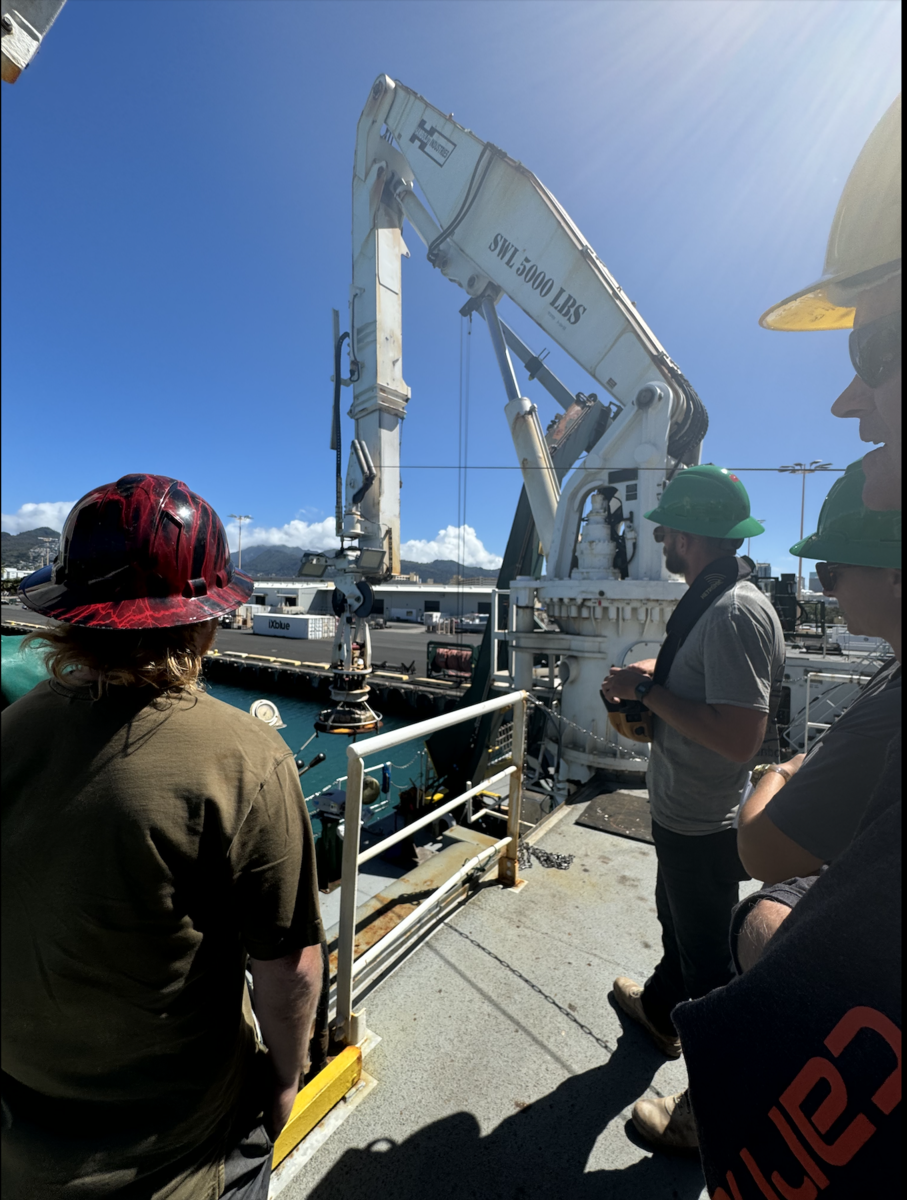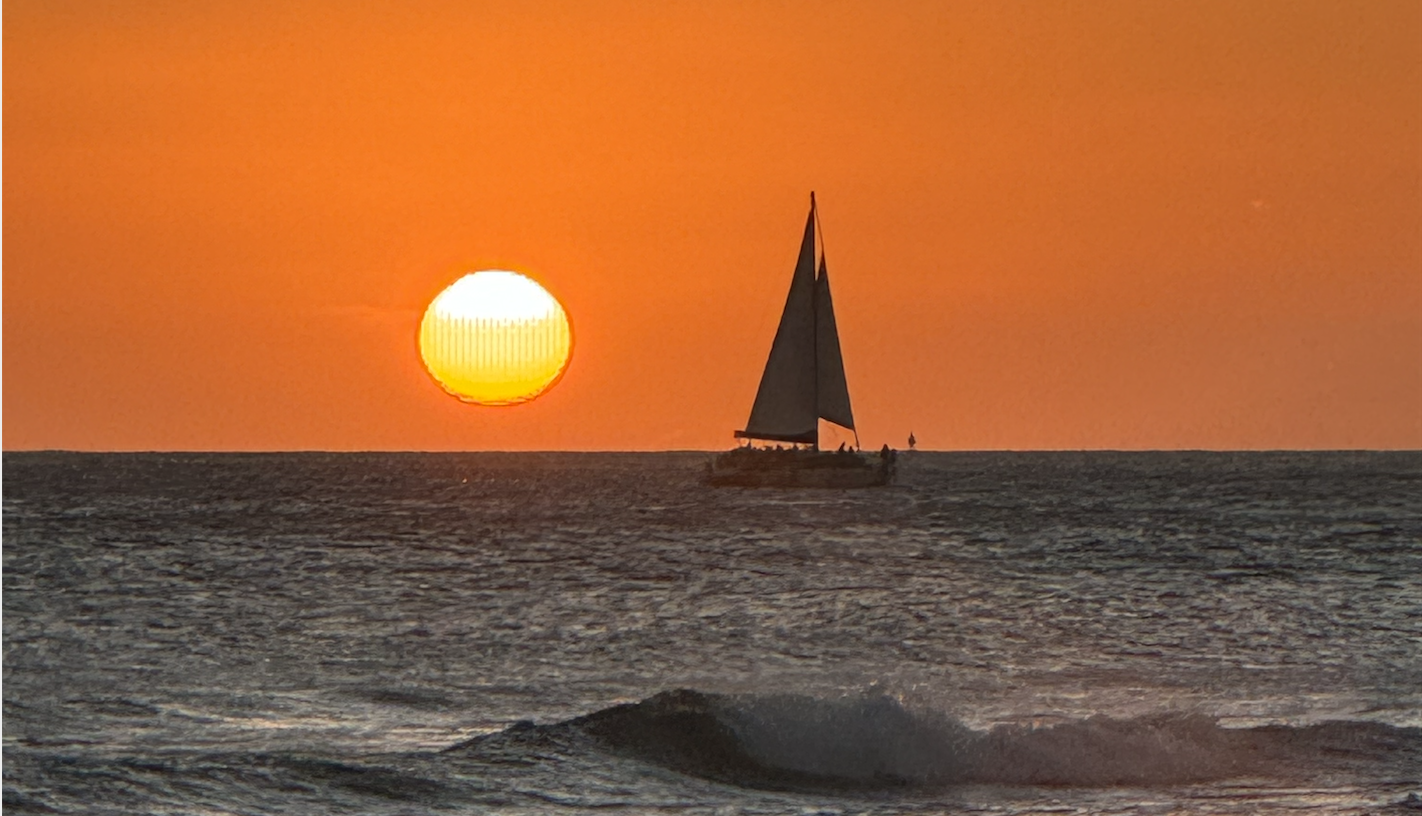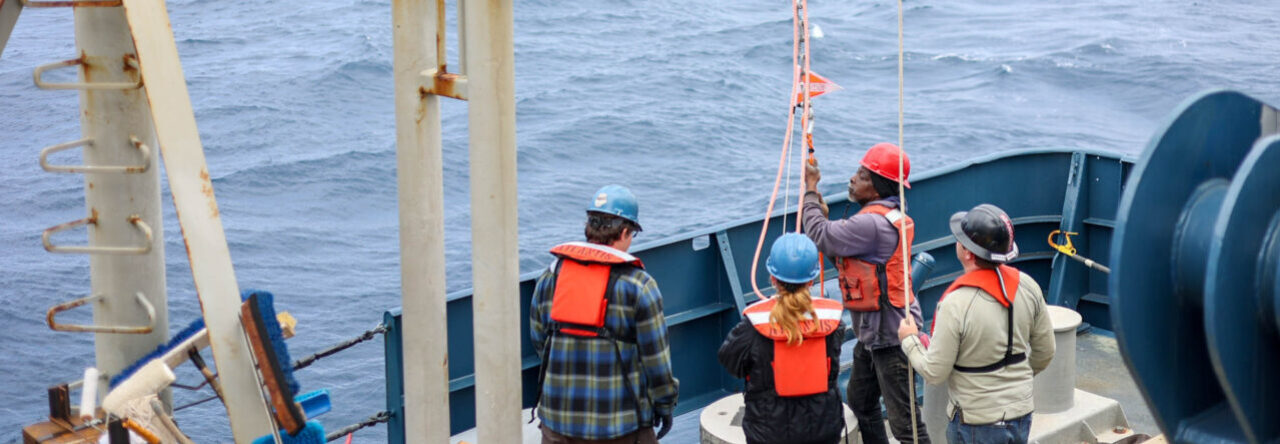Week #2 – In Between Days ~ In Between Cruises
Offloading HOT and Preparing for Tahiti
We arrived at port early on 10/14 after an exciting and pretty well running cruise. The scientists were quick in offloading boxes and materials, and we were off to the University of Hawaii at Manoa by about 9:00. Dan, Hunter, and I offloaded the boxes in Dan’s office, and we were done with the day by 10 a.m! Again, the HOT team has got these routine field work sampling campaigns down to a ” T”, so the rest of the day was ours!

– Dan Fitzgerald and I cheesing it up after a succesful HOT Cruise 🙂
The following day (10/15), I got a ride from Dan to the UH Marine Center to help the Ocean Technology Group, Ben and James set up a Connectivity, Temperature, and Depth (CTD) sensor in preparation for the Tahiti cruise. Since this is not a HOT Cruise the Ocean Technology Group (OTG) crew needs to set up a new CTD Rosette (which they have 2 of!). This is also in the best interest of the HOT Team since those cruises happen so frequently and are so short, that nothing must mess up with the instrumentation that HOT uses.
To prepare the CTD, we replaced three different types of sensors (Oxygen, connectivity, and temperature) and their duplicates. The CTD contains duplicates of each sensor as a way to verify that the data is sound and to limit the amount of sensor drift, a phenomenon where the data slowly gets skewed as it progresses through the cast. Marine Technicians or OTG observe the CTD data on the computer console inside the ship as the CTD-Rosette travels to depth, to make sure that we are not getting any drastic results that would tell us that the sensor is not working.
Once the CTD sensors are replaced and calibrated, we lodge the CTD head back into the frame of the rosette and start strapping the CTD with zip ties and electrical tape ensuring that we don’t cross any wires or cause unnecessary rubbing on metal-to-metal or chords directly on metal that could cause bends in the wires that could damage communication from the CTD to the ship. We also strapped in other auxiliary sensors like the Photosynthetically Active Radiation (PAR), Video Plankton Recorder (VPR), Transitometer and a Radiometer that give us other information that enhances our understanding of what the water column looks like.

– Drilling in the CTD Bridal that helps hold the CTD up while its being casted.
On Wednesday 10/16, we began loading for the South Pacific Cruise that was to set sail on Saturday 10/19. This looked like moving a lot of boxes containing incubators, filters, and bottles onto a UH van and then transporting them onto the ship, sorting them into their respective rooms and labs, and starting to unpack. This process feels a bit chaotic but it definitely builds excitement. In this process of moving in, it finally dawned on me that I was going to be at sea for 37 days, which simultaneously felt really long and very short and kinda intimidating. We are going to be so far and isolated from the rest of the world that if anything were to happen, we’d be a couple days away from your typical medical amenities which is totally not scary at all right, right?
Thursday was a bit of a rest day as the ship was on sea trial. Sea trial describes the process of taking the ship out to sea under realistic conditions to make sure that the ship’s machinery is operating properly, that equipment is working well, and getting a realistic view of the ship’s speed, maneuverability, and safety features. Due to this being ship-focused, the science team was not needed that day, which I used to catch up on some reading and emails.
On Friday (10/18) however, I got pretty cool training on how to utilize the Hawboldt Winch. A Hawboldt winch is the machinery that pays out or retracts coil to the Launch and Retrieval System (LARS) , a mechanical looking arm that transports the CTD Rosette on and off the boat. The Hawboldt winch is largely specific to Kilo Moana, as most other research vessels typically deploy their CTD-Rosette using an A-frame or from the side of the ship. Although I will not be using the Hawboldt winch, the OTG figured it would be good for me to know how it operates and to understand what the operator is seeing when we are deploying the rosette. It’s definitely helpful when maybe there is a miscommunication or just understanding what the winch is capable of and I could help the operator or they can help me, best handle the situation.

– Learning all about the Hawbolt Crane from one of the OTG techs aboard the KM!
On Saturday 10/19 we arrived at Kilo Moana at 0800 am to set sail at 0900. On sailing day there are a few orders of business…
Safety Meeting – understand what the ship’s safety measures are, typically hosted by the captain and the chief mate.
Safety Drills – where we learn about the different drills and practice one. When we are dismissed from the safety meeting we go to our rooms to pick up our life vest and GUMBY suits and meet in the staging bay.
Test our instrumentation (CTD and Trace Metal CTD) in our underway station.
We had just finished with both of our test casts when we heard a call that sounded like a dog yelping but actually turned out to be an abandoned ship siren! There had been a failure of the cooling hose which resulted in some flooding in the generator. Thankfully the crew responded to the situation swiftly, but it did result in the ship having to return to port to assess the damage, let things dry out, and get any new parts that may be needed. Not surprisingly this really dampened our spirits but we were thankful that everyone was safe and that we could make it back to port.
I stayed back on the ship to finish unpacking and to decompress. And finally got to visit Ala Moana- Magic Island to watch a nice sunset and catch a glimpse of what’s left of the comet.

– Sunset from the Ala Moana Magic Beach Park
Cheers,
Briana

